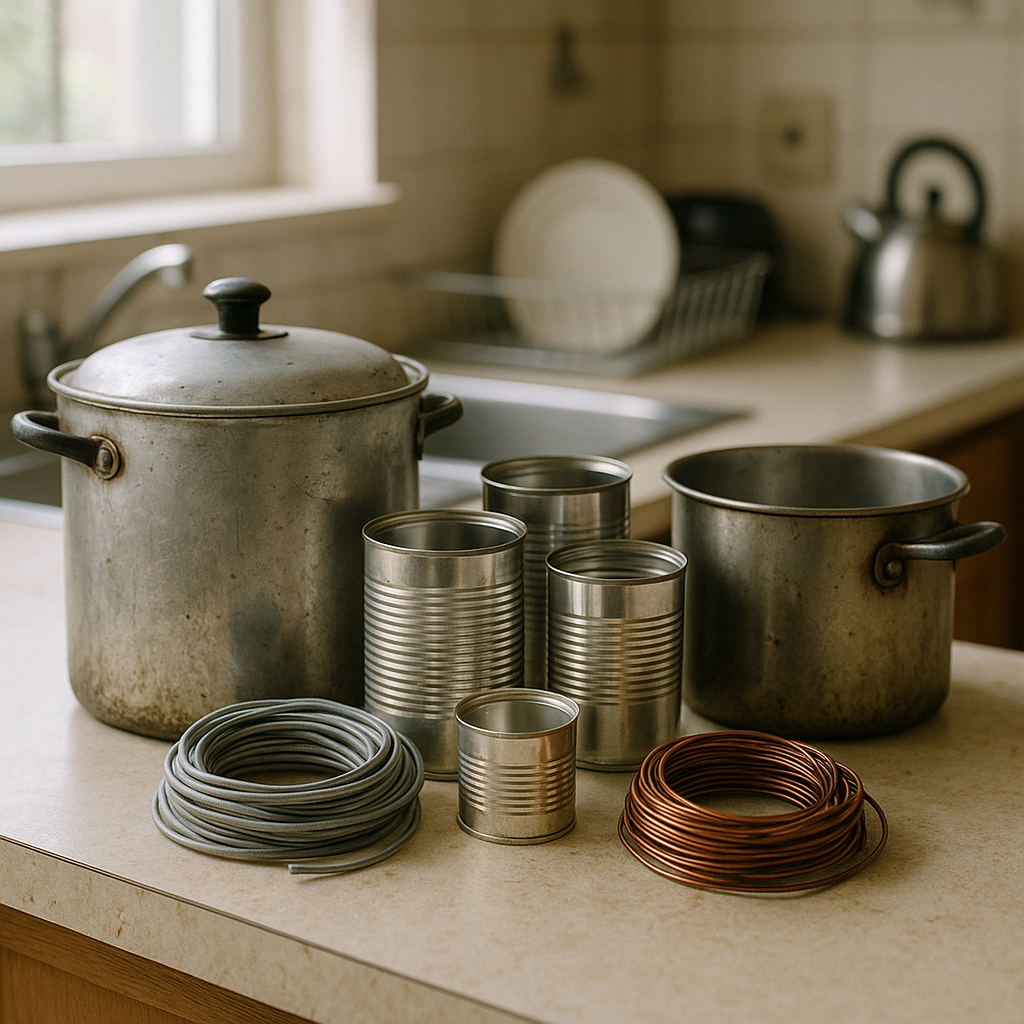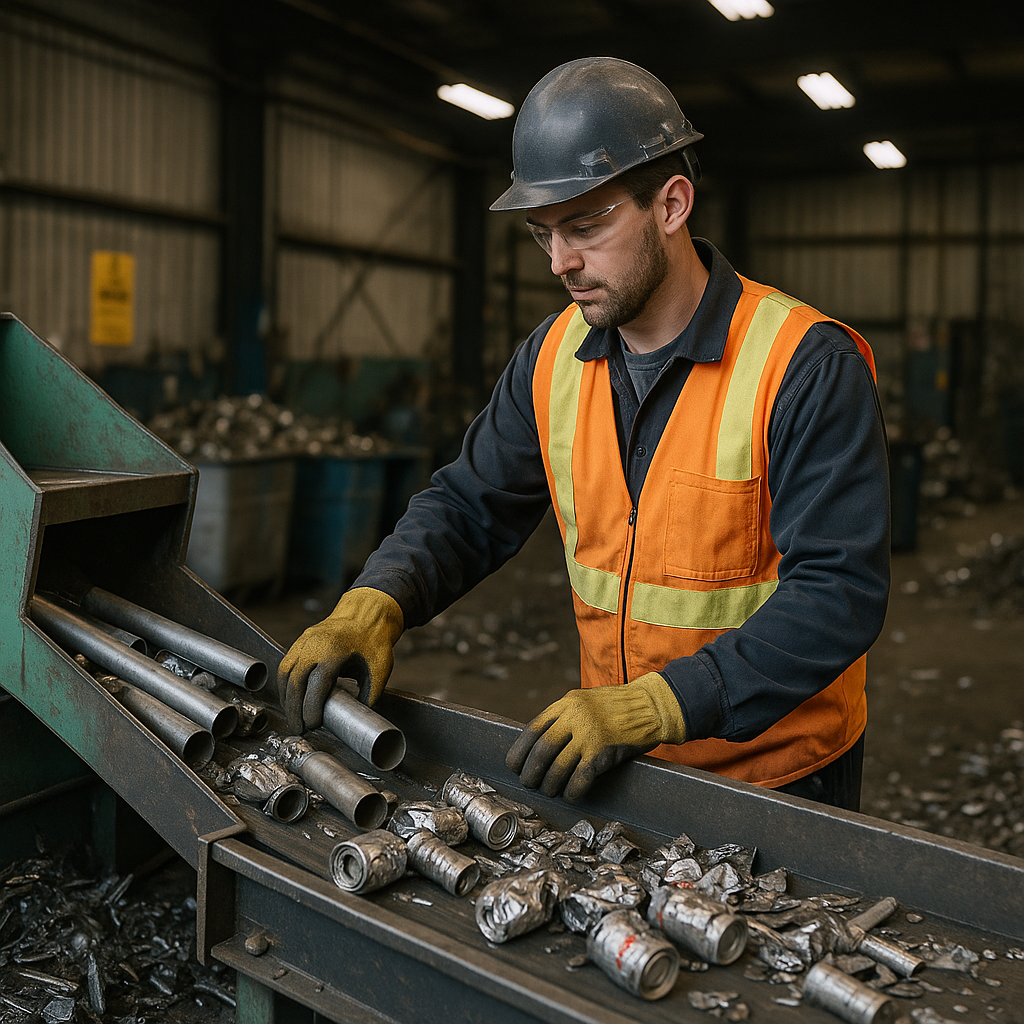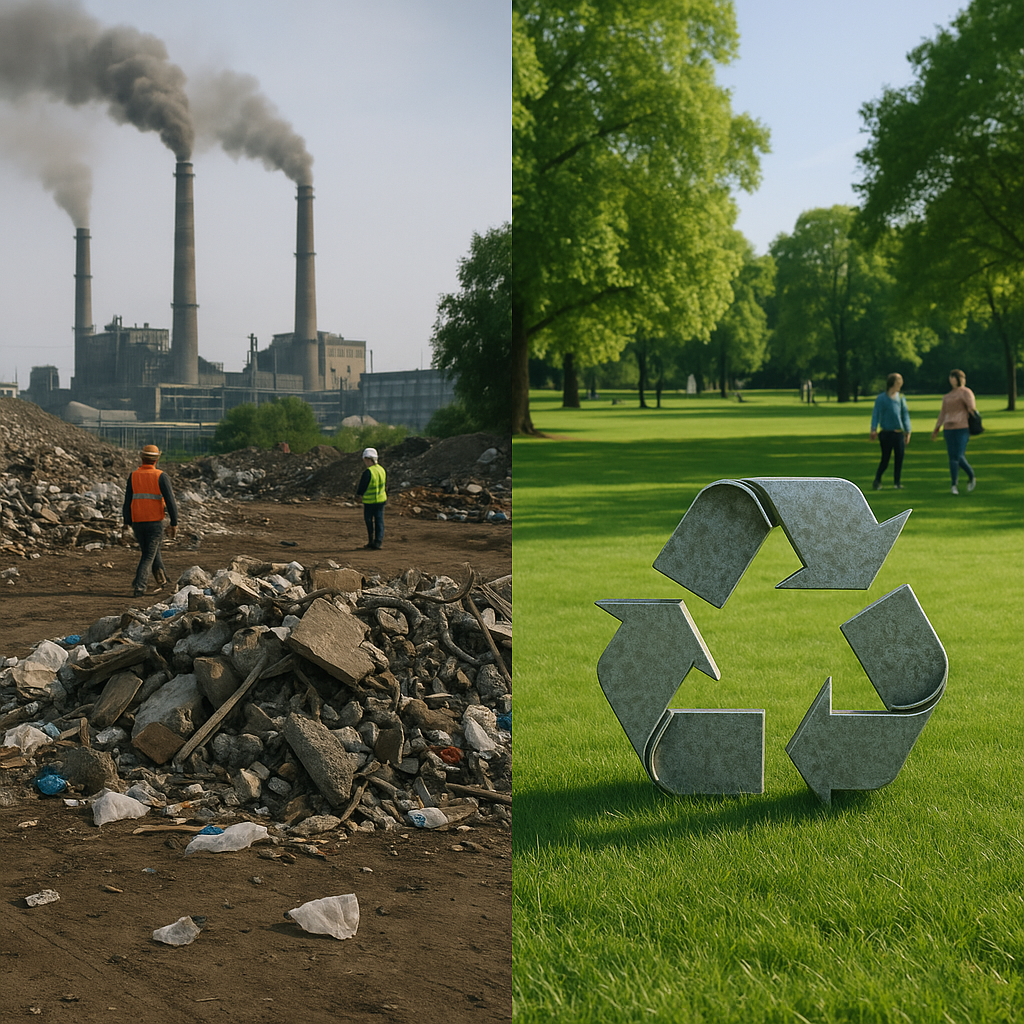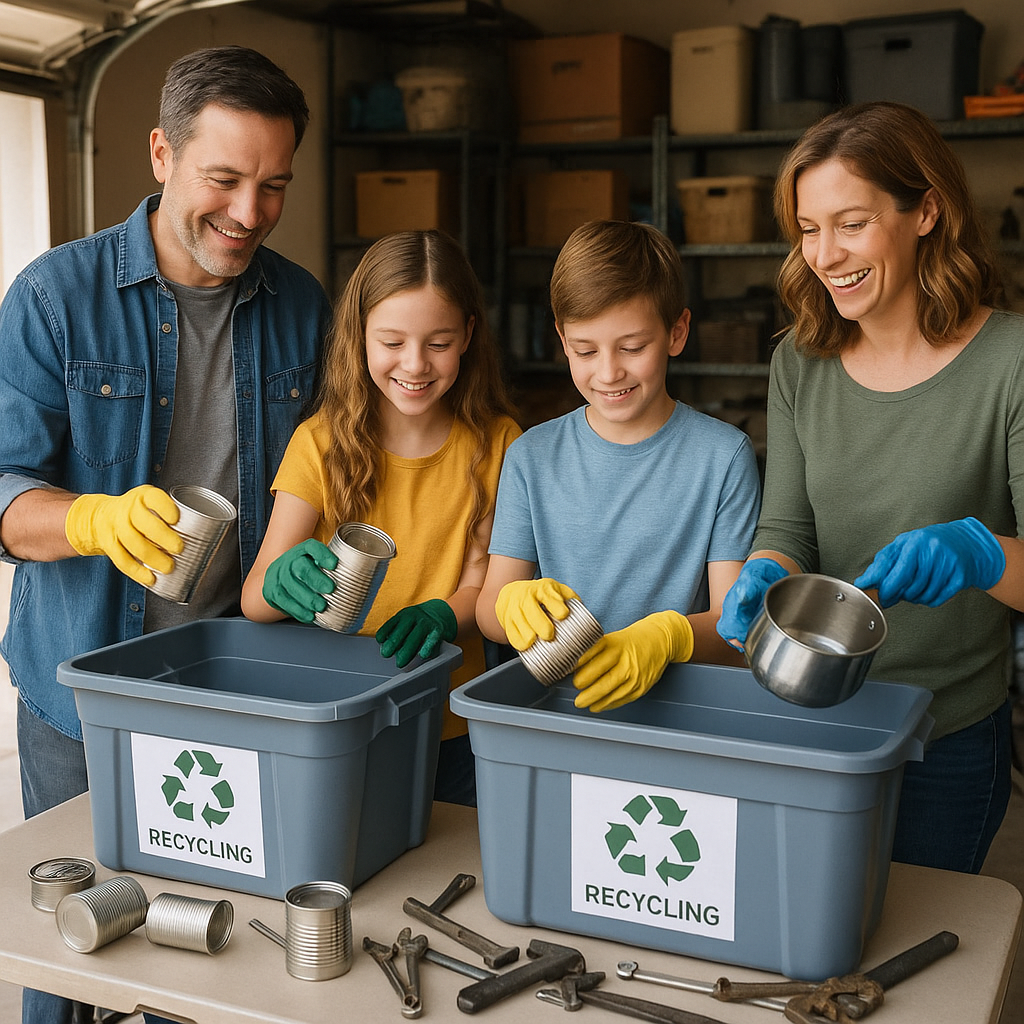5901 Botham Jean Blvd, Dallas, TX 75215
What Is Scrap Metal Recycling for Homeowners?
May 9, 2025That rusted bicycle frame in your garage. The broken toaster taking up space in your kitchen drawer. The aluminum cans from last weekend’s gathering. These everyday metal items represent valuable resources that can find new life through scrap metal recycling. Rather than sending these materials to landfills, homeowners now have the opportunity to participate in an environmentally crucial practice.
Scrap metal recycling for homeowners involves collecting various metal items from around the house that are no longer useful and directing them into recycling channels. Common household items like appliances, tools, fixtures, and food containers often contain recyclable metals such as aluminum, copper, steel, and iron. By identifying and properly sorting these materials, homeowners play a direct role in resource conservation.
The environmental impact of metal recycling cannot be overstated. When metals are recycled rather than discarded, we reduce the need for mining new ore, which significantly damages natural landscapes and ecosystems. The process also substantially decreases energy consumption – recycling aluminum, for instance, uses up to 95% less energy than producing it from raw materials. This simple household practice helps combat climate change by reducing greenhouse gas emissions while preventing valuable materials from occupying landfill space.
What Types of Scrap Metal Can Homeowners Recycle?

Homeowners can recycle two main categories of metal: ferrous and non-ferrous. Understanding the difference helps you sort materials properly and potentially earn more for your recyclables.
Ferrous Metals
Ferrous metals contain iron. They’re magnetic and generally more durable than their non-ferrous counterparts. Most household ferrous metals come from appliances, tools, and building materials.
Common household ferrous items include old steel pots and pans, rusty hand tools, steel shelving, and iron railings. Larger items like steel bed frames, washing machines, and refrigerators also contain significant amounts of recyclable ferrous metal.
Cast iron bathtubs, radiators, and heavy machinery parts are particularly valuable ferrous recyclables. These items are often heavier but contain substantial amounts of reusable metal.
Non-Ferrous Metals
Non-ferrous metals don’t contain iron. They’re typically lighter, non-magnetic, and more valuable per pound than ferrous metals. They resist corrosion better than ferrous metals.
Copper is among the most valuable non-ferrous metals homeowners can recycle. Common sources include old plumbing pipes, electrical wiring, and air conditioning components. Even small amounts of copper can be worth recycling.
Aluminum items are abundant in homes. Beverage cans, window frames, siding, gutters, and lawn furniture contain recyclable aluminum. This lightweight metal is infinitely recyclable with no loss in quality.
Brass fixtures like doorknobs, light fixtures, and old plumbing fittings are also valuable recyclables. Look for brass in bathroom fixtures, decorative hardware, and musical instruments.
Household Electronics and Appliances
Obsolete electronics contain various recyclable metals. Computers, cell phones, and televisions contain precious metals like gold, silver, and platinum. These devices also contain copper, aluminum, and other valuable materials.
Kitchen appliances offer significant recycling opportunities. Toasters, microwaves, and coffee makers contain both ferrous and non-ferrous metals. Even small appliances are worth recycling rather than sending to landfills.
Larger appliances like stoves, refrigerators, and washing machines contain substantial amounts of metal. These items require special handling but are highly recyclable.
Automotive Metal Items
Car parts represent a significant source of recyclable metal for homeowners. Old batteries, catalytic converters, and radiators contain valuable metals. Even exhaust systems and brake components can be recycled.
Complete vehicles can be recycled through specialized services. Cars, motorcycles, and other vehicles contain steel, aluminum, copper, and various other metals worth reclaiming.
Metal rims from tires, old license plates, and various car accessories contain recyclable material. These smaller components add up when properly sorted and recycled.
Construction and Home Improvement Scrap
Home renovation projects generate substantial metal waste. Old pipes, wiring, ductwork, and hardware are all recyclable. Collecting these materials during projects can yield significant recycling opportunities.
Metal roofing, siding, and guttering contain recyclable materials. These building components are typically made of aluminum, steel, or copper, all of which have recycling value.
Old tools and equipment from workshops and garages provide another recycling source. Hand tools, power tools, and lawn equipment contain various metals that can be reclaimed through proper recycling channels.
How Does the Scrap Metal Recycling Process Work?

The scrap metal recycling process follows a systematic approach that transforms discarded metal items into valuable resources. Collection marks the first crucial step. Homeowners, construction sites, and industrial facilities gather recyclable metals ranging from old appliances and cookware to automotive parts and building materials. This initial stage sets the foundation for effective recycling.
Sorting comes next and requires careful separation of metals by type. Ferrous metals like iron and steel contain magnetic properties, making them distinguishable from non-ferrous metals such as aluminum and copper. Advanced sorting techniques include magnetic separation for ferrous metals and eddy current methods for non-ferrous materials. This classification ensures high-quality recycled metal by preventing contamination between different metal types.
Once sorted, the metal undergoes processing to reduce its size for efficient handling. Large mechanical claws grip and move bulky metal items into industrial shredders and shearing machines. These powerful devices break down the scrap into smaller, uniform pieces that melt more efficiently. The processing stage significantly impacts energy consumption in later steps of recycling.
The melting phase follows processing. Different metals require specific temperature ranges—aluminum melts at around 660°C while steel needs approximately 1370°C. Specialized furnaces transform the processed metal fragments into liquid form, creating the raw material for new products. This stage demands significant energy but still requires far less than extracting and refining virgin metals.
Purification represents a critical step for ensuring material quality. Even after thorough sorting, the melted metal may contain impurities that compromise its integrity. Recyclers employ various techniques to remove these contaminants, including electrolysis for copper and magnetic separation for stray particles in ferrous metals. This attention to purity maintains the recycled metal’s functional properties.
The final stages involve cooling, solidification, and transportation. The purified molten metal cools in molds that determine its shape for manufacturing use. These solid forms—typically bars, ingots, or sheets—then travel to manufacturing facilities where they become raw materials for new products. The recycled metal retains its original qualities, making it indistinguishable from newly mined metal in many applications.
This comprehensive process demonstrates how scrap metal recycling efficiently transforms what might be considered waste into valuable resources. The system prioritizes material quality while minimizing environmental impact. Through mechanical claws, shredders, furnaces, and purification methods, the industry gives new life to metals that can be recycled repeatedly without degrading their properties.
What Are the Environmental Benefits of Scrap Metal Recycling?

Scrap metal recycling stands as a cornerstone of sustainable waste management with far-reaching environmental benefits. When metals are recycled rather than discarded, we dramatically reduce the need for environmentally damaging mining practices that cause soil erosion, water pollution, and habitat destruction.
Resource conservation ranks among the primary advantages of metal recycling. By processing and reusing existing metals, we extend the lifespan of finite materials like copper, aluminum, and steel. This conservation approach preserves natural resources that would otherwise be extracted through energy-intensive mining operations.
The energy savings from scrap metal recycling are substantial. Producing aluminum from recycled materials requires 95% less energy than creating it from raw bauxite ore. Steel recycling saves approximately 75% of the energy needed for primary production. These energy reductions directly translate to lower utility costs and reduced strain on power generation systems.
Greenhouse gas emission reduction represents another significant environmental advantage. Traditional metal production releases considerable carbon dioxide and other pollutants. By choosing recycled materials, homeowners help cut these emissions substantially. Studies show that recycling steel and aluminum reduces greenhouse gas emissions by 86% and 95% respectively.
Water conservation benefits shouldn’t be overlooked. Manufacturing new metal from virgin ore demands enormous quantities of water. Recycling processes use significantly less water resources. For instance, recycling copper can reduce water consumption by up to 90% compared to mining and refining new copper.
Landfill diversion creates another positive environmental impact. Metal items take up valuable landfill space and can remain there for hundreds of years. When these materials contain hazardous components like lead or mercury, they risk contaminating soil and groundwater. Recycling keeps these potential pollutants out of waste disposal sites.
By participating in scrap metal recycling programs, homeowners play a crucial role in building a more sustainable future. Even small actions like recycling old appliances, car parts, or aluminum cans contribute to a healthier planet with cleaner air, water, and land resources.
Conclusion: Embracing Scrap Metal Recycling at Home

Scrap metal recycling represents a powerful way for homeowners to contribute to environmental sustainability. Through simple actions like separating metals from regular waste, cleaning containers, and identifying recyclable materials around the home, individuals make a significant impact. These small efforts translate into substantial resource conservation and waste reduction on a larger scale.
The journey toward a more sustainable lifestyle begins with recognizing the value in everyday metal objects we might otherwise discard. By participating in local recycling programs and properly preparing metals for recycling, each household plays a crucial role in conserving natural resources and reducing greenhouse gas emissions. For professional guidance with larger recycling projects or to learn more about maximizing your environmental impact, contact Okon Recycling at 214-717-4083.
